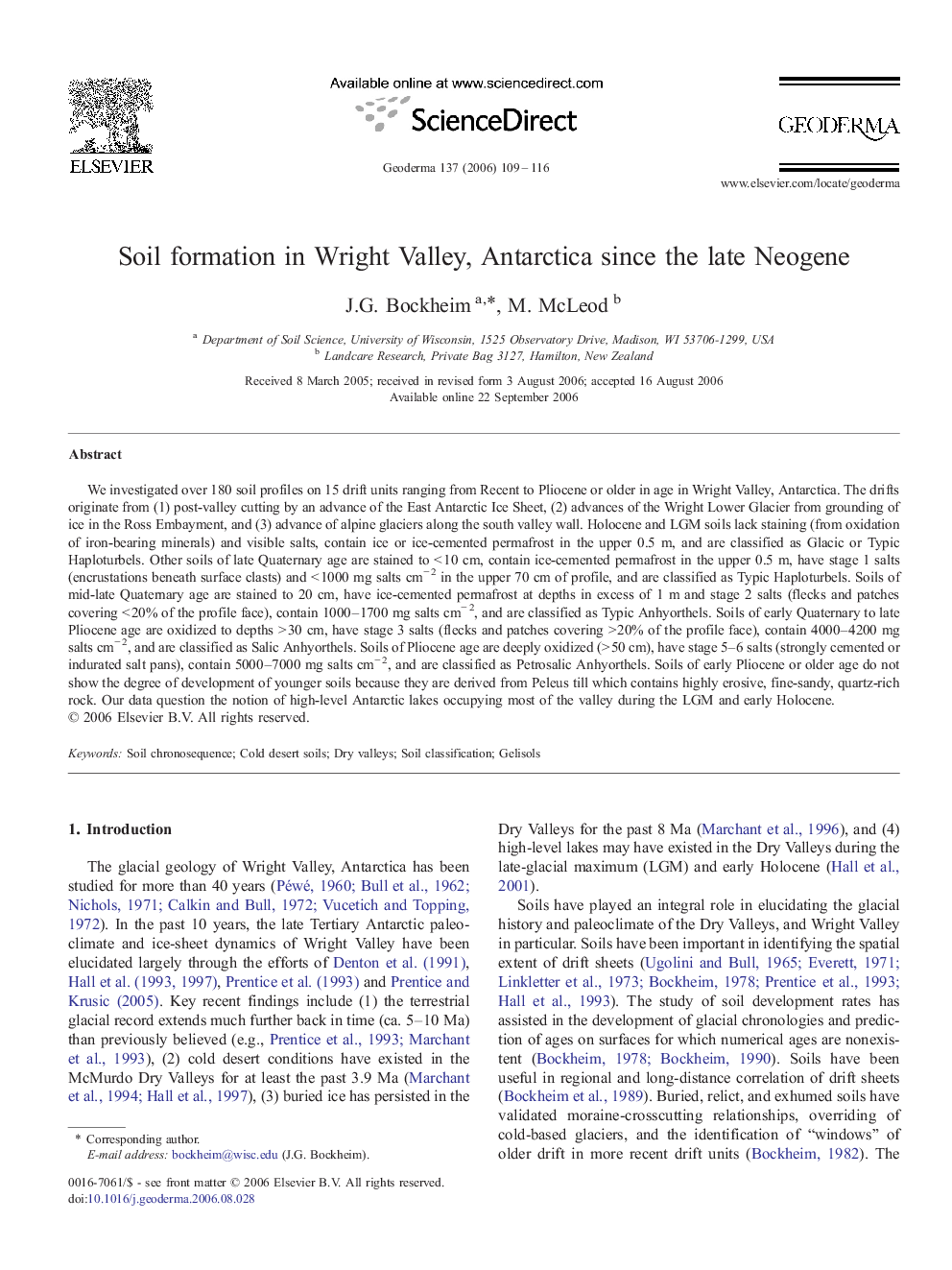| کد مقاله | کد نشریه | سال انتشار | مقاله انگلیسی | نسخه تمام متن |
|---|---|---|---|---|
| 4575530 | 1629559 | 2006 | 8 صفحه PDF | دانلود رایگان |

We investigated over 180 soil profiles on 15 drift units ranging from Recent to Pliocene or older in age in Wright Valley, Antarctica. The drifts originate from (1) post-valley cutting by an advance of the East Antarctic Ice Sheet, (2) advances of the Wright Lower Glacier from grounding of ice in the Ross Embayment, and (3) advance of alpine glaciers along the south valley wall. Holocene and LGM soils lack staining (from oxidation of iron-bearing minerals) and visible salts, contain ice or ice-cemented permafrost in the upper 0.5 m, and are classified as Glacic or Typic Haploturbels. Other soils of late Quaternary age are stained to < 10 cm, contain ice-cemented permafrost in the upper 0.5 m, have stage 1 salts (encrustations beneath surface clasts) and < 1000 mg salts cm− 2 in the upper 70 cm of profile, and are classified as Typic Haploturbels. Soils of mid-late Quaternary age are stained to 20 cm, have ice-cemented permafrost at depths in excess of 1 m and stage 2 salts (flecks and patches covering < 20% of the profile face), contain 1000–1700 mg salts cm− 2, and are classified as Typic Anhyorthels. Soils of early Quaternary to late Pliocene age are oxidized to depths > 30 cm, have stage 3 salts (flecks and patches covering > 20% of the profile face), contain 4000–4200 mg salts cm− 2, and are classified as Salic Anhyorthels. Soils of Pliocene age are deeply oxidized (> 50 cm), have stage 5–6 salts (strongly cemented or indurated salt pans), contain 5000–7000 mg salts cm− 2, and are classified as Petrosalic Anhyorthels. Soils of early Pliocene or older age do not show the degree of development of younger soils because they are derived from Peleus till which contains highly erosive, fine-sandy, quartz-rich rock. Our data question the notion of high-level Antarctic lakes occupying most of the valley during the LGM and early Holocene.
Journal: Geoderma - Volume 137, Issues 1–2, 31 December 2006, Pages 109–116